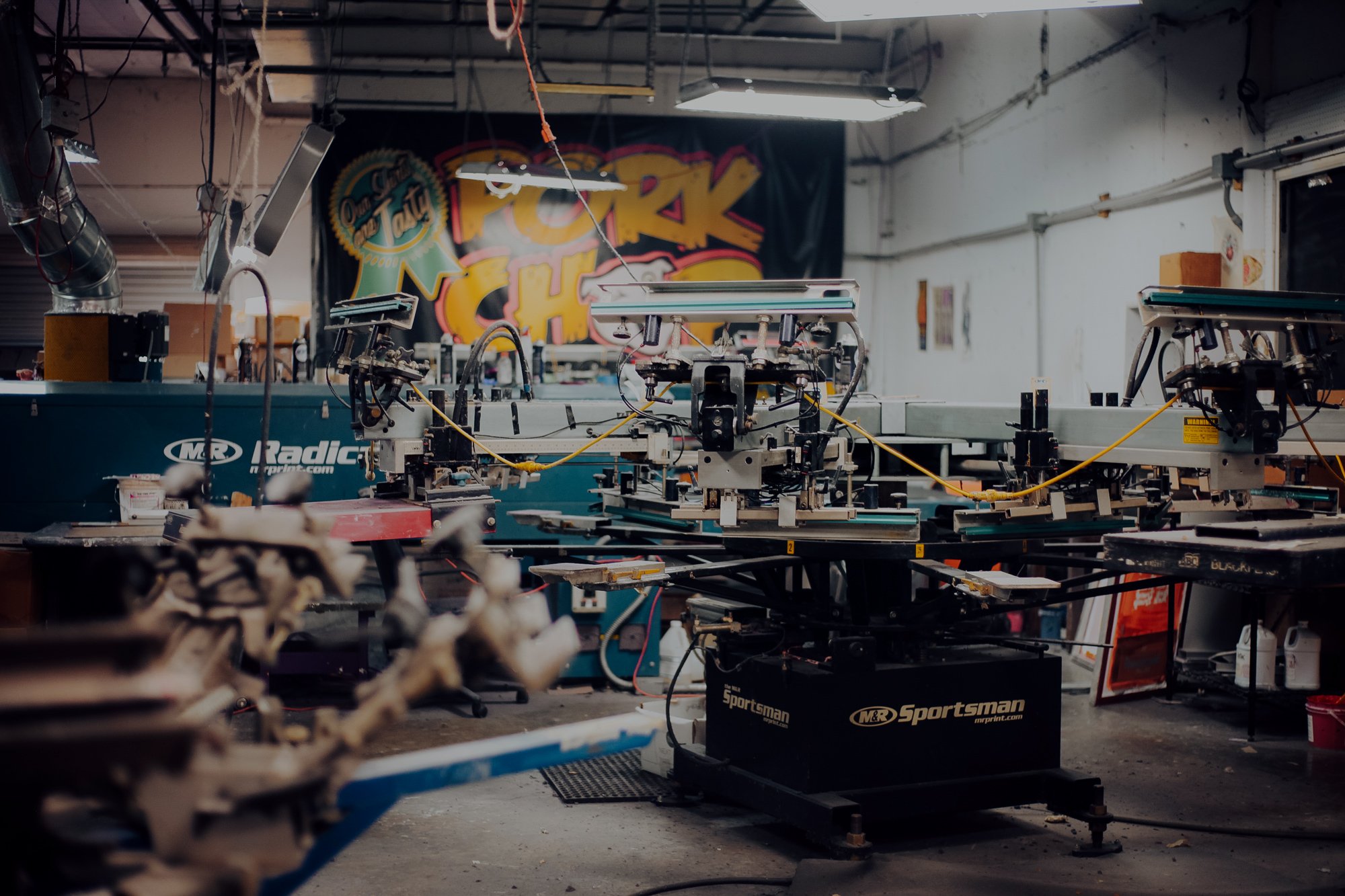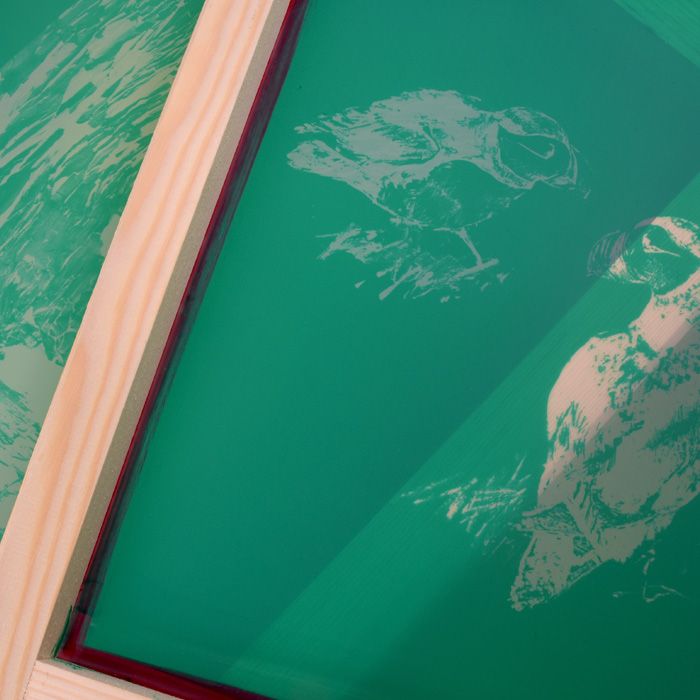Budget-Friendly T-Shirt Printing for Startups
Display Printing Uncovered: Everything You Required to Know Regarding Tee Shirt and Garment Printing Strategies
If you have actually ever wondered exactly how those dynamic designs wind up on your preferred t-shirts, you're in the right place. Screen printing is a fascinating technique that incorporates art with strategy, using unlimited opportunities for imagination. Understanding the principles, from tools to ink selections, can greatly affect your results. Prepared to explore the important elements that make display printing an art form? Allow's discover the information that can boost your projects.
The Essentials of Display Printing: Just How It Functions
When you plunge into display printing, you'll discover it's both an art and a scientific research. At its core, display printing involves developing a stencil, or screen, that permits ink to pass with just in certain areas.
Next, you'll blend your inks and prepare your printing surface. Setting the screen over the fabric, after that use a squeegee to press ink via the display onto the garment. This process calls for precision, as you desire clear, lively prints. After printing, you'll cure the ink with warmth, guaranteeing it follows the material and lasts via cleans. Each step is necessary, and understanding them will raise your display printing abilities, changing simple garments into one-of-a-kind, expressive items.
Kinds Of Screen Printing Methods
When you grasp the basics of screen printing, it's time to check out the various strategies that can boost your designs. One popular method is typical screen printing, where ink is pushed through a stenciled screen. This method is wonderful for bold, dynamic colors. There's water-based ink printing, which provides a softer feeling and is environment-friendly, yet it requires a different approach to treating.
If you're going for great details, take into consideration discharge printing. This method eliminates dye from the fabric, leaving a soft, vintage look. Another alternative is plastisol printing, understood for its resilience and vibrant colors, making it a favored for lots of brands. Experiment with halftone printing to produce gradient results and complex styles. Each strategy has its special charm, so do not hesitate to try them out to discover what matches your design best!
Essential Devices for Display Printing
To achieve spectacular outcomes in display printing, having the appropriate tools is basic. You'll require a sturdy screen printing framework, which holds the mesh that transfers your layout onto the garment. Next off, spend in top quality mops; these are crucial for using ink equally throughout the display.
Picking the Right Inks and Products
When picking inks and products for screen printing, you need to take into account the type of ink that works best for your project. Think of fabric compatibility to assure your layouts look last and terrific long. Explore eco-friendly ink alternatives to make your printing procedure much more lasting.
Kinds Of Screen Inks
Selecting the ideal display ink is essential for attaining dynamic, sturdy prints that satisfy your project's demands. There are a number of types of display inks to check out. Specialized inks, such as glow-in-the-dark or metal, can add distinct impacts to your styles.

Material Compatibility Factors To Consider
Understanding material compatibility is important for accomplishing top notch display prints, especially since various materials react distinctively to numerous inks. When picking inks, think about the textile type-- cotton, polyester, or blends. For cotton, water-based inks function well, supplying softness and breathability. Polyester, on the other hand, frequently needs plastisol inks for better adhesion and vibrant shades. You may need to utilize a combination of both types if you're publishing on blends. Constantly examine your inks on example fabric to assure they stick correctly and keep shade stability. Furthermore, remember that textile weight and appearance can influence the last result, so picking the right ink and product combo is crucial for your project's success.
Eco-Friendly Ink Options
Eco-friendly inks are becoming a prominent choice for display printers that desire to lessen their environmental effect while maintaining quality. When choosing inks, consider water-based inks, which are much less harmful and simpler to cleanse up contrasted to typical solvents.
Furthermore, look for inks made from eco-friendly sources, such as soy or vegetable-based options. By picking the appropriate inks and products, you'll not only develop spectacular layouts yet also contribute to a more lasting printing process. Make the button, and your prints will certainly reflect your commitment to the setting!
Preparing Your Layout for Display Printing

File Layout Demands
To assure your layout looks sharp and dynamic on textile, you'll require to pay attention to submit style demands for screen printing. Start with vector files like AI or EPS, as they can be scaled without losing top quality. If you utilize raster pictures, decide for high-resolution files, such as TIFF or PNG, preferably at 300 DPI. Stay clear of using JPEGs, as they can shed quality when resized. Likewise, make certain your design has a clear background to prevent unwanted white edges on your prints. Finally, maintain color modes in mind; CMYK is standard for display printing, so transform your RGB develops appropriately. By following these standards, you'll establish your art work up for a successful print.
Shade Separation Methods
Color separation is a necessary action in preparing your design for display printing, and understanding it visit can greatly boost your print top quality. You'll need to damage your layout right into individual colors, as each shade needs a separate display during printing. This accuracy not only assures accurate shade representation however likewise enhances the printing procedure.
Resolution and Dimension
Achieving the best results in display printing starts with ensuring your layout has the best resolution and size. Preferably, your artwork needs to go to the very least 300 DPI (dots per inch) for sharp, clear prints. Your last item may look less than professional and pixelated. if you make use of lower resolution.
When it involves dimension, think about the measurements of your print area. Design your artwork to match the final print dimension, ideally creating it in the actual dimensions you'll be publishing. This method, you'll avoid any kind of unanticipated scaling issues.
Constantly inspect your style in both vector and raster styles. Vector graphics can be scaled without shedding high quality, making them perfect for screen printing. Preparing correctly will guarantee your layout looks outstanding on every garment!
Step-by-Step Screen Printing Refine
Display printing is a dynamic process that allows you to develop vivid styles on numerous surfaces. To begin, you'll need a screen, solution, and your selected ink. Initially, prepare your screen by cleaning it thoroughly. Next, use the emulsion uniformly and allow it completely dry in a dark area. When completely dry, subject your display to light with your design placed on it, which will set the solution where the light hits, producing a pattern - screen printing kit.
Put ink onto the display and utilize a squeegee to push the ink via the pattern onto the fabric. Lift the screen thoroughly and let the print completely dry. You've successfully screen published your layout.
Tips for Successful Display Printing Projects
While you're diving into your display printing jobs, keep in mind that prep work is key to success. Start by gathering all your products-- inks, garments, screens, and squeegees. A tidy work space helps prevent undesirable mistakes, so clean before you begin.
Next, verify your art work is high-resolution and correctly sized for your garment. Examine your display for appropriate exposure and tidy it extensively to prevent spots. visite site When blending your inks, adhere to the maker's standards to achieve the ideal uniformity.
Throughout printing, apply also stress with your squeegee for regular results. Do not rush; take your time to verify each print meets your criteria. After printing, allow your garments completely dry totally before taking care of or packaging them.
Lastly, always maintain an example of your help future reference. By doing this, you can examine your progression and boost your techniques with time. Happy printing!

Regularly Asked Questions
The length of time Does It Take to Set up a Display Printing Work?
Setting up a display printing task normally takes about 30 mins to an hour. You'll prepare the displays, mix inks, and adjust the press. The time differs based upon intricacy and experience, so remain organized!
Can I Publish on Various Material Enters Utilizing the Very Same Method?
Yes, you can print on different fabric kinds using the same technique, but you'll need to change your settings and inks. Some textiles take in ink differently, so trying out warranties the very best outcomes for each and every material.
What Prevail Errors to Prevent in Screen Printing?
When display printing, prevent typical mistakes like using the wrong ink, disregarding proper exposure times, or avoiding pre-press checks. Constantly evaluate your setup and keep clean screens to ensure top quality results each time.
Exactly How Can I Properly Tidy and Preserve My Screen Printing Equipment?
To appropriately tidy and keep your display printing tools, you must regularly wash displays with appropriate solvents, inspect squeegees for wear, and ensure all devices are saved dust-free and completely dry. Consistency boosts and prevents costly repairs efficiency.
Is Screen Printing Environmentally Pleasant Compared to Various Other Methods?
Screen printing can be extra eco-friendly than various other techniques, particularly if you make use of water-based inks and eco-conscious products. By choosing sustainable products and techniques, you decrease waste and minimize your influence Full Article on the world.
Screen Printing Uncovered: Every Little Thing You Need to Know About Tee and Garment Printing Methods
At its core, screen printing involves producing a pattern, or display, that enables ink to pass via just in specific areas. Placement the screen over the material, after that make use of a squeegee to press ink with the screen onto the garment. One prominent method is conventional screen printing, where ink is pushed through a stenciled display.When choosing inks and products for display printing, you need to take right into account the type of ink that works ideal for your task.